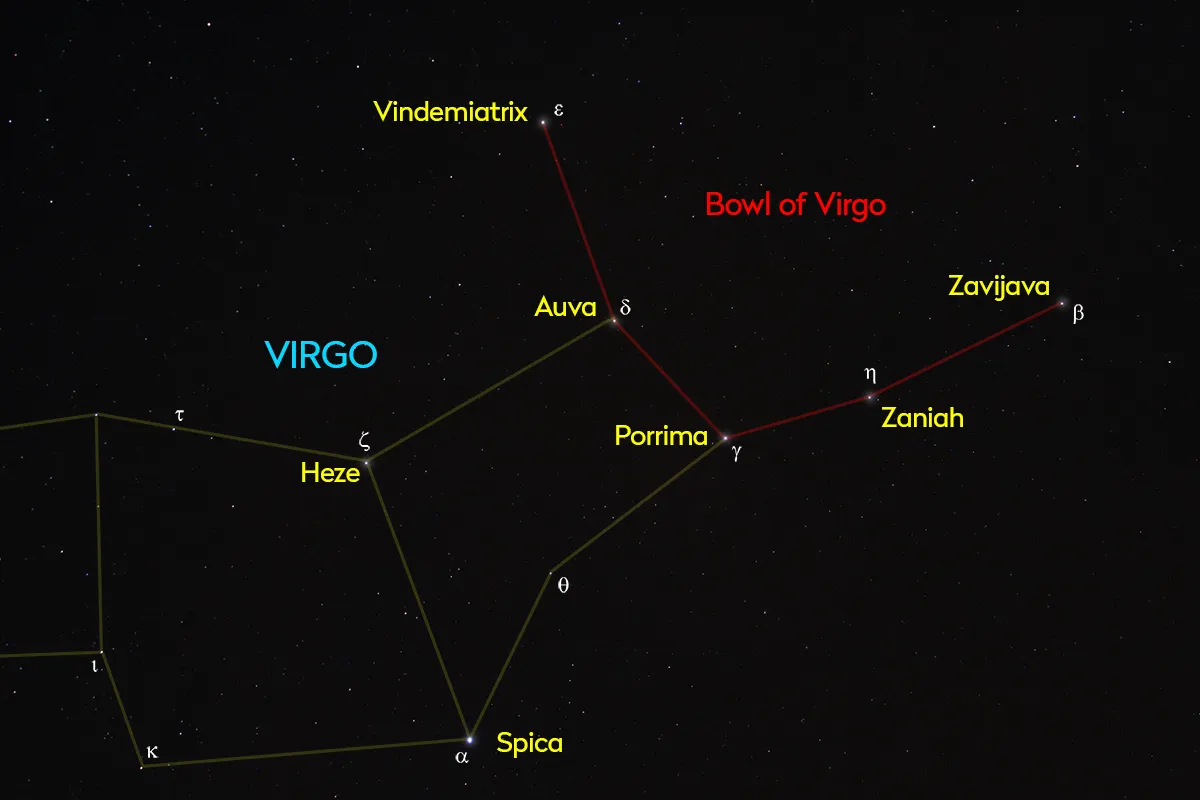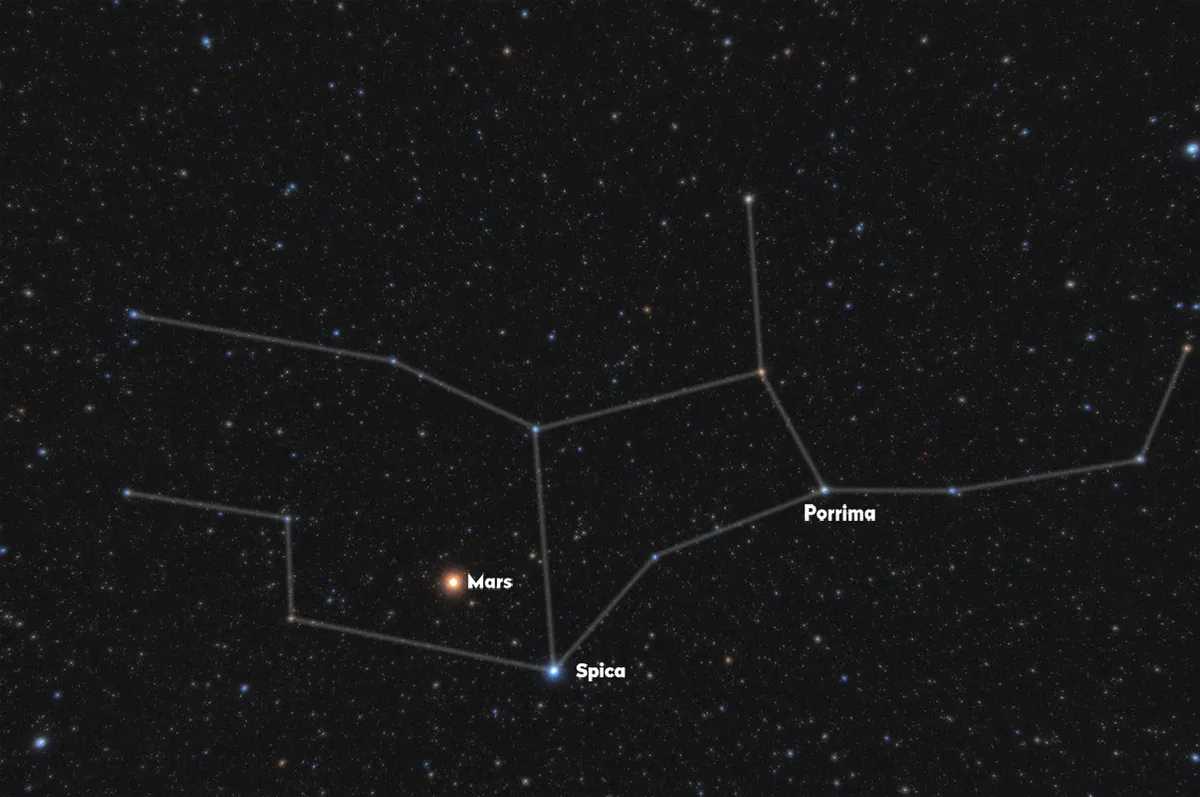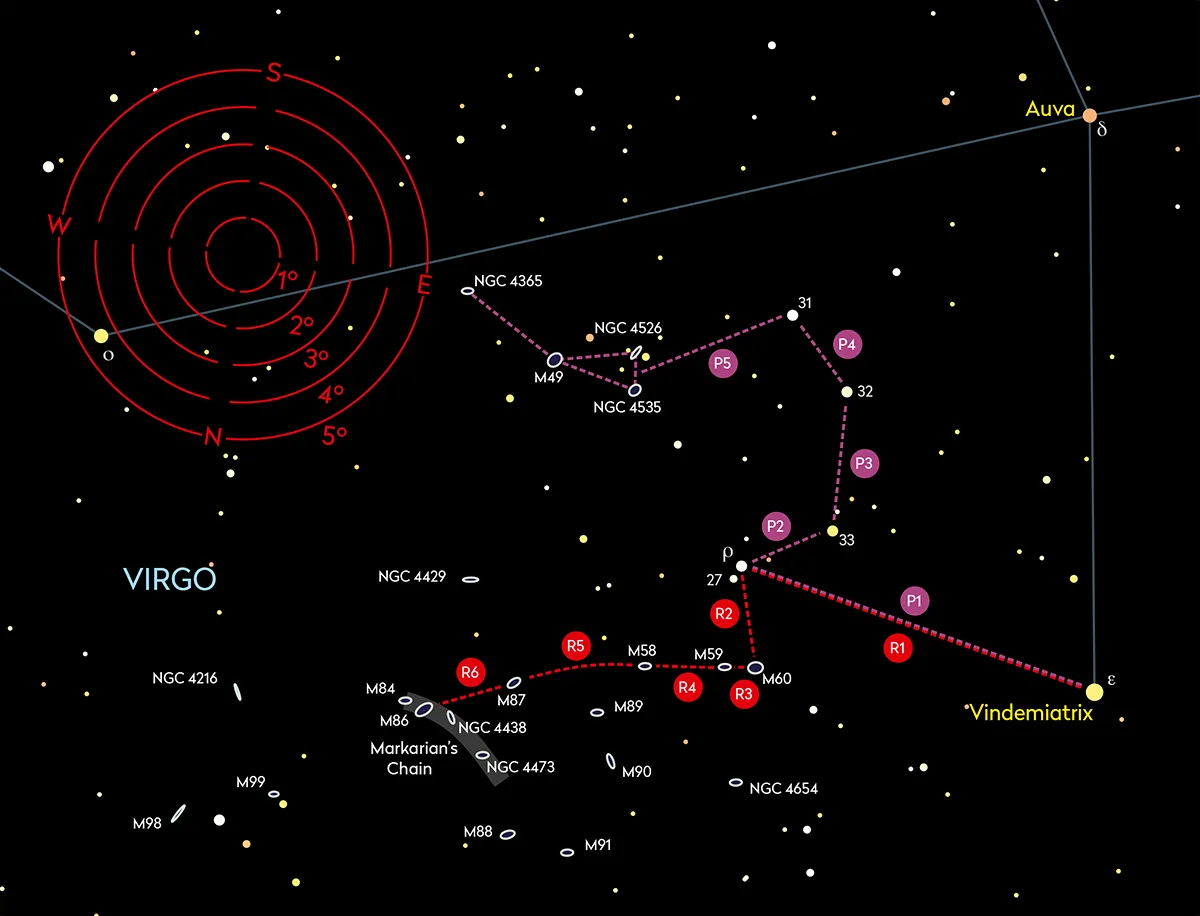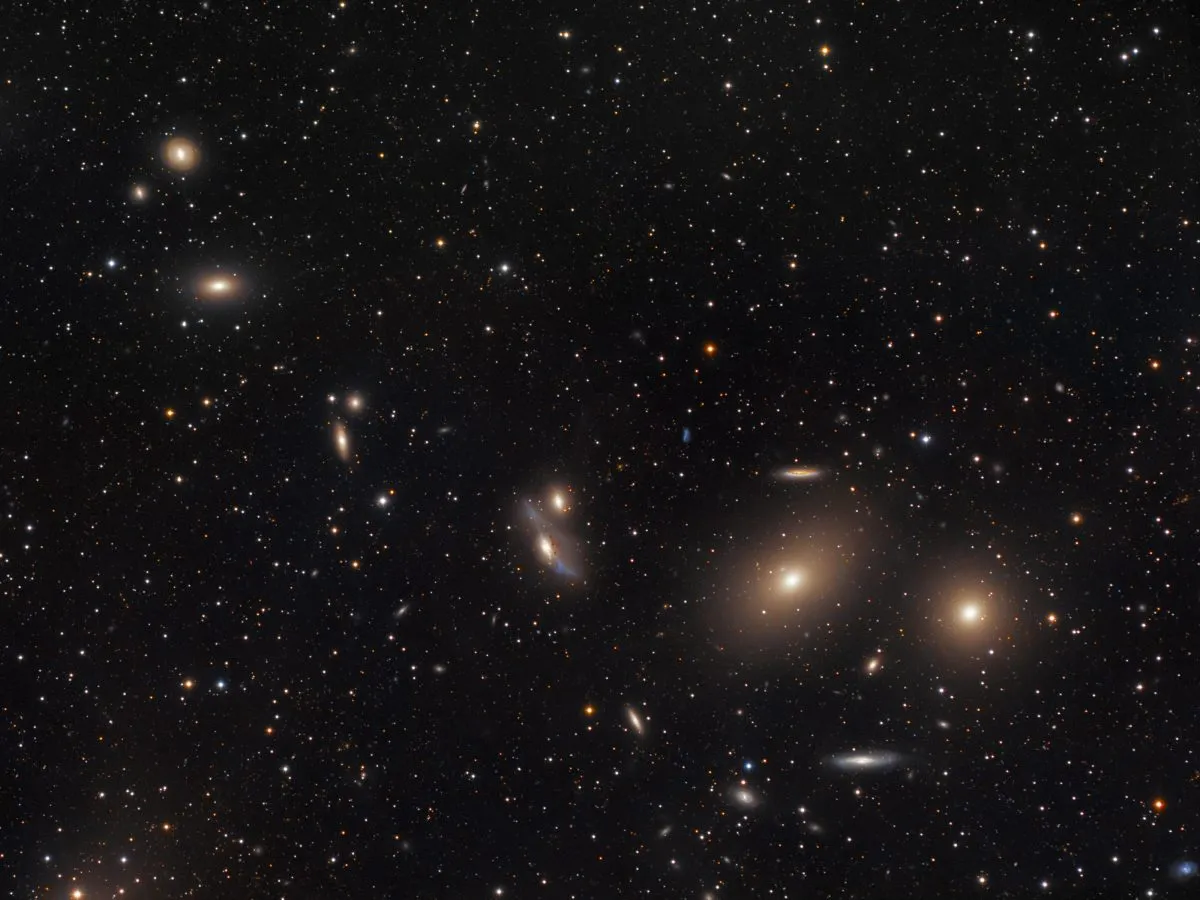The Bowl of Virgo is a large semi-circular star pattern - known as an 'asterism' - that's visible in the spring sky and is filled with wonderful deep-sky objects like galaxies that you can observe through your telescope.
The Bowl of Virgo and defines the northwest portion of Virgo, the Virgin. It lies southeast of the tail of Leo, the Lion, marked by mag. +2.1 Denebola (Beta (β) Leonis).
The Bowl of Virgo is formed from five stars in Virgo:
- Mag. +2.8 Vindemiatrix (Epsilon (ε) Virginis)
- Mag. +3.4 Auva (Delta (δ) Virginis)
- Mag. +2.7 Porrima (Gamma (λ) Virginis)
- Mag. +3.9 Zaniah (Eta (η) Virginis)
- Mag. +3.6 Zavijava (Beta (β) Virginis)

Can you spot star Zavijava?
Despite being designated beta, Zavijava is the fifth brightest star in Virgo.
It has a spectral type of F9 V, which places it close in spectral hierarchy to our Sun’s own G2 V.
The ‘V’ here refers to the fact that both stars are main-sequence dwarfs, and our Sun’s G-class follows straight on from Zavijava’s F.
Zavijava is a close neighbour, 36 lightyears from the Sun and the closest of the ‘bowl’ stars, just within Porrima’s 38 lightyear-distance.
The other stars are further away. Consequently, the brightness of Zavijava is down to proximity.

Compared to the Sun, Zavijava isn’t that dissimilar. Zavijava is 1.4 times more massive, 1.7 times larger and has a luminosity 3.6 times higher than the Sun.
It’s also pretty old, with an estimated age of 2.9 billion years.
Once thought to be the host for several Jupiter-class gas giant planets, subsequent observations have failed to reach any confirmation for the existence of these objects.
Analysis of the star’s spectrum has revealed it to be metal-rich.
In astrophysical terms this means it contains a higher percentage of elements heavier than helium.
Its iron content has been measured to be 30 per cent higher than the abundance in our own Sun.
Spotting galaxies in the Bowl of Virgo

The region of sky north of the Bowl of Virgo is known as the Realm of Galaxies because it’s littered with galaxies.
A good challenge is to use galaxies rather than stars, to locate other galaxies.
To do this we’d recommend using a telescope of at least six inches aperture.
Galaxies are diffuse objects, so the larger the aperture the easier they are to see.
Use a low-power eyepiece and ensure your eyes are properly dark-adapted.
We recommend starting at mag. +2.9 Vindemiatrix (Epsilon (ε) Virginis), the easternmost star in the Bowl of Virgo.
Slew 5° west and fractionally south to locate mag. +4.9 Rho (ρ) Virginis, easily recognised with mag. +6.2 27 Virginis north-northwest of it.
From Rho there are two routes shown on the chart above. Red 2 (R2) takes you to M60, with M59 immediately next door (R3).
Extend the line from M60 through M59 (R4) to eventually arrive at M58.
The next leg (R5) requires a slight northward curve, travelling about the same distance as that between M60 and M58 to arrive at M87.
Keep the line going, straightened slightly (R6) to arrive at M86, part of a beautiful arrangement of galaxies known as Markarian’s Chain.

The purple route starts the same way (P1), but then hops to mag. +5.7 33 Virginis (P2), mag. +5.2 32 Virginis (P3) and finally to mag. +5.6 31 Virginis (P4).
The last leg (P5) is crucial because here you have to turn by 90° to head northwest by around twice the distance between 32 and 31 Virginis, arriving at a triangular arrangement of galaxies: NGC 4535, NGC 4526 and M49.
NGC 4365 should be easy to hop to from this triangle too.
Stars are shown to magnitude +8.0 in our chart, while some galaxies approach magnitude +12.0. As a consequence, expect some fainter stars to add to the confusion.
However, with patience and clear skies, the techniques shown here should allow you to explore this fascinating area and discover its amazing wealth of galactic treasures.
This guide originally appeared in the April 2022 issue of BBC Sky at Night Magazine.

